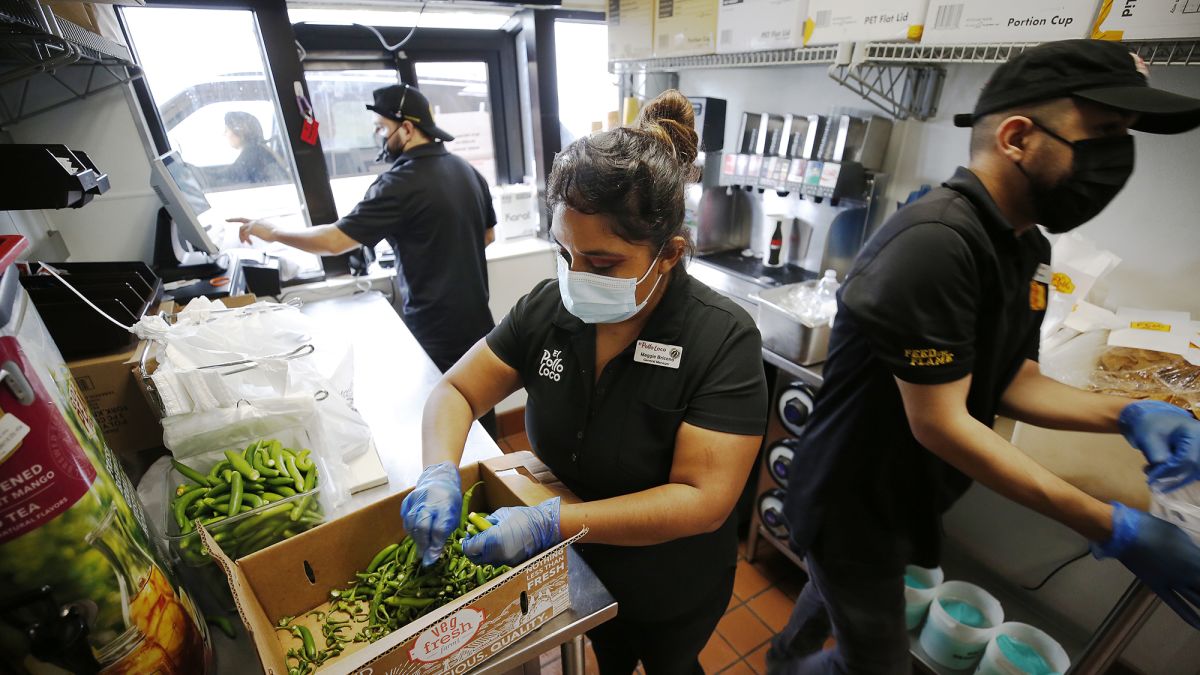THE JOB TRENDS YOU NEED TO LOOK OUT FOR NEXT YEAR

CNN: December 3, 2021
Expect strong job growth in 2022, unless Omicron hits hard
US economic growth is likely to be strong in 2022, with forecasts pegging real GDP growth at 3.5%. Much of the growth should come from sectors that are still reopening, such as restaurants, hotels, entertainment, personal services and passenger transportation. These industries are relatively labor intensive, so further recovery will support strong job growth.
Yet, these are also the industries that are most vulnerable to a potential Omicron-driven Covid surge. If the new variant proves to be more transmittable and/or more vaccine-resistant than the Delta variant, economic growth will likely be slower, as some forecasters already predict. A new wave would also impact consumer spending. Older Americans, who are the most vulnerable to Covid-19, are more likely to cut back on in-person services. They are also responsible for a disproportionately high share of spending on things like travel, lodging and restaurants. So a new Covid flare-up would mean that these industries would continue to lag behind the overall economy in terms of customer demand and the need to hire more workers.
Indeed, while overall employment may reach pre-pandemic levels by the end of 2022, barring a major new variant-driven Covid surge, it will remain deeply uneven sector by sector. Even without increased pandemic risk, industries, such as nonresidential construction, parts of the retail sector, passenger transportation, commercial banking, in-person customer services jobs, business and facilities support, higher education, personal services, like beauty salons or barber shops, and nursing and residential care, are unlikely to reach their pre-pandemic job numbers next year. These industries are impacted by the permanent shift to online activity and remote work. Global tourism, affecting labor markets in the airline, accommodation, entertainment and restaurant sectors, will also continue to be negatively impacted during 2022, given the pandemic’s worldwide reach.
Labor shortages and rapid wage growth will continue
As of November, there were no signs that ongoing labor shortages were easing. The unemployment rate is rapidly declining and may dip below 3.5% by the end of 2022, which would be one of the lowest rates in recorded history. Omicron may drive a second wave of baby boomers to retire early, further reducing the supply of labor. All these factors will propel severe labor shortages and recruiting difficulties through 2022.
There is a silver lining for workers: Overall wage growth is likely to remain strong next year, especially for new hires, and workers in blue-collar and manual services jobs. At the same time, inflation shows no signs of slowing down, which should increase demand from existing workers for cost-of-living pay hikes. Inflation and the higher wages that will be paid to attract new hires are likely to spur employers to raise current employees’ pay much faster than in the past decade.
A wage-price spiral, where higher prices and rising wages feed each other, leading to faster increases in both, may occur — and at levels unprecedented in the US in recent decades. That may spur the Federal Reserve to raise interest rates significantly more than the markets are currently expecting in 2022. This would slow GDP growth to below economists’ current expectations.
Employers are also reacting to the severe recruiting difficulties by lowering education requirements for job openings: Recent new hires have tended to have less education than their predecessors, according to my own analysis of the Census Bureau’s Current Population Survey data. During the pandemic, fewer young people wanted, or were able, to attain post- high school degrees, including training at trade schools, partly because some of these organizations were shut down. As workers are entering the labor market with less education, employers must provide more training on their own.
Remote work’s impact may be bigger than expected
Omicron’s emergence has contributed to a growing realization that the virus will maintain a significant presence in our lives for longer than expected. The new variant may delay the return to the office and push some companies to allow more remote work than previously planned, and in some cases permanently.
That could lead to a larger-than-expected geographic labor market adjustment: Many Americans will relocate during 2022, thanks to the shift to remote work, leaving expensive housing markets in large cities for cheaper living elsewhere. On top of that, these large city centers will continue to suffer as fewer daily commuters spend money at the cafes, restaurants and shops near their offices. That will result in stagnating or even declining hiring in some city centers while hiring in other residential areas should increase.
The growing willingness to allow remote work will also lead many companies to adjust their own geographical footprints. Some, especially in expensive locations, may open or expand operations in cheaper areas. In fact, we’ve already seen this trend taking place: West Coast tech companies are significantly shifting hiring to other regions, increasing the competition for talent in these areas.
Of course, all these scenarios assume Omicron’s impact will be moderate. If the variant proves hardier than we anticipate, these effects would be more drastic and devastating. Hopefully that more severe scenario does not become a reality.




